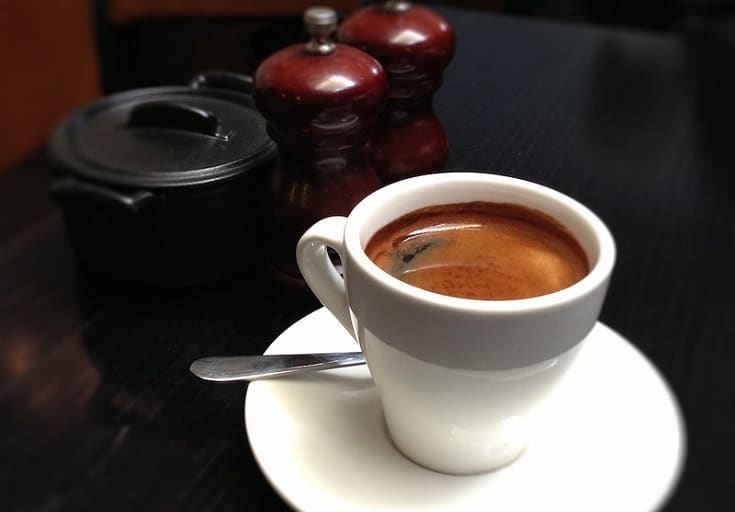
Glass is superior to plastic in many ways. It’s reusable, recyclable, and doesn’t give your beverage a funky flavor like some other materials can. Serving coffee in a glass instead of a Styrofoam cup lends an air of sophistication to an event while keeping clean-up simple. And yet, how well your glass will fare under heat depends largely on the quality of the glass.
There are two main types of glass: soda-lime or borosilicate. While some soda-lime glasses can take the heat, borosilicate glasses are specifically created to withstand extreme temperatures and don’t come with the danger of shattering. Continue reading to learn more about which types of glass can hold coffee.

How to Tell If Your Glass Will Hold Coffee
There’s a pretty technical definition of borosilicate versus lime-soda glass, but if you do not have a degree in chemistry or $30 worth of mineral oil to use to submerge your glass into (yes, that is an internet-recommended way you can tell if you have true borosilicate glass), we’ll explain what the difference is.
Soda-lime glass is the most common household glass. Although it’s widely used, it’s cheaper and thinner than borosilicate glass, and likely to shatter under harsh temperatures. The easiest way to tell if you have a soda-lime glass on your hands is to notice the depth and whether the edges are clear. Soda-lime glass is incredibly thin and it’s bluish green around the edges. Think of an old glass bottle of pop and you get the picture. You might still be able to pour hot coffee into a soda-lime glass if you acclimate the glass first, such as running it under hot (but not boiling) water. The biggest risk of shattering the glass comes from the sudden temperature change, not necessarily the temperature itself.
Borosilicate glass, on the other hand, was made to handle hot temperatures. It’s thicker and should be solidly clear, with no blueish-green tint on the edges. Most higher-quality bakeware will be made out of this solid material because it can withstand temperature changes of 300 degrees or more at once.

What About Cold Drinks?
You can typically pour a cold drink into any type of glass. The only exception would be if you combine a piping hot glass—especially of the soda-lime variety—with an ice-cold drink. The temperature change could shatter the glass in this instance just as easily as if it were a hot one.

In Conclusion
Whether you’re planning a party or looking for ways to make your lifestyle more earth-friendly, glass is an excellent alternative to plastic and Styrofoam. Ceramic may be a better choice if your drink is super-hot on a cold day or if your soda-lime glass steaming fresh out of the dishwasher awaits a cup of lemonade.
The temperature of the beverage doesn’t matter nearly as much as the sudden change in temperature, so the glass shouldn’t break as long as you don’t pour any beverage that’s drastically hotter or colder than the cup. However, you might want to invest in borosilicate glass drinkware just to be safe.
- https://www.discovermagazine.com/the-sciences/pyrex-glass-isnt-as-shatterproof-as-it-once-was-report-finds
- https://www.differencebetween.com/difference-between-soda-lime-glass-and-borosilicate-glass/
- https://icedteapitcher.myshopify.com/blogs/news/how-can-you-tell-if-pyrex-is-borosilicate
- https://ecoroots.us/blogs/blog/13-reasons-you-should-be-using-glass-coffee-mugs
Featured Image Credit: PactoVisual, Pixabay













